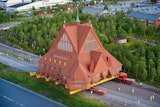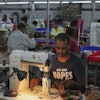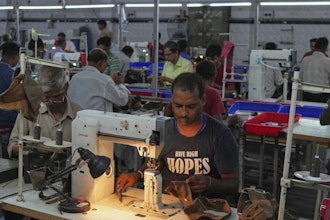The global-materials cost squeeze that has stifled profitability over the past three years is getting no less painful as we prepare to enter the second half of 2006. Prices for commodities of all types continue to rise, and no end is in sight to the leaps in the cost of everything from aluminum to copper.
For manufacturers, of course, those price increases translate into higher costs for raw material and components. However, the low-cost demands of global competition are preventing manufacturers from passing those increases along to their customers. The dilemma has been further exacerbated over the past 18 months by the soaring price of energy – crude oil price increases translate to higher gasoline and diesel prices, as well as higher costs for plastics used in components, for transportation of goods to and from factories, and for oil-powered utilities.
The most difficult and frustrating aspect of this situation is the volatility of the commodity prices. Not so long ago, manufacturers could forecast with reasonable accuracy what their costs would be looking a year forward and could forecast expenses accordingly. Today, however, raw-material and component costs are changing monthly.
The sources of these developments range from the exploding economies of China, India and other emerging regions consuming vast amounts of steel and copper, to new technologies in sectors like aerospace that require rarer and more specialized materials. As demand skyrockets throughout the global economy, manufacturers have begun encountering shortages in some specialty materials, such as titanium, resulting in dramatically longer lead times. In fact, lead times have stretched out to as long as 20 to 30 weeks in many instances. As a result, manufacturers now must find a way to accurately forecast the types and quantities of materials they will need in more than half a year’s time.
The squeeze gets tighter as more customers turn to the global market to find the best prices for manufactured goods, refusing to accept the price hikes generated by increasing commodity costs. As manufacturers move to demand-driven production, the customer really is in the driver’s seat, even to the extent of dictating terms of how much they will pay the manufacturer for a product.
Improving efficiencies to manage costs
As the marketplace continues to deny manufacturers the ability to recoup higher material and energy costs, many organizations are left with one alternative: improving efficiencies. Fortunately, new technology has enabled manufacturers to make tremendous gains in running leaner operations with timelier and more accurate forecasts.
• Increasing productivity: Boosting productivity entails increasing throughput (the volume of product produced and sold) without a corresponding increase in non-variable costs. If manufacturers can generate more throughput with the same labor in the same factory with the same machines at the same costs, they can help compensate for the increased costs of raw materials. Just-in-time techniques, enterprise resource planning software and automated technology solutions that dynamically synchronize raw material supply and production with demand can help achieve these goals.
• Leveraging innovation: By using design engineering and process re-engineering, manufacturers may be able to produce the same product faster and with fewer defects while using less material to achieve the same form, fit and function. • Assuring quality: Quality should be measured in terms of first-pass yield – the proportion of products that are produced exactly to specifications the first time so that no rework is required. Ensuring the job is done correctly on the first pass means the manufacturer avoids all the waste involved in materials, labor and time required to fix the product or process. • Using fewer suppliers: Manufacturers can aggregate their buying power by ordering their materials and components from fewer suppliers. They gain leverage over the suppliers by becoming a much larger customer and often can obtain better pricing. • Consolidating purchasing: Manufacturers that have multiple sites and multiple environments can leverage their buying power further by consolidating purchasing into a centralized function. By ordering to meet the requirements of four or five plants all at the same time and simultaneously dealing with fewer suppliers, manufacturers should be able to negotiate lower prices for materials across the enterprise. • Examining alternative supply sources: Every manufacturer should capitalize on the global economy to determine if particular items can be purchased less expensively from alternate sources. The latest technology enables manufacturers to integrate scheduling of materials and components directly with their production processes and offers the ability to track and trace shipments from anywhere in the world. • Substituting less-costly materials: Form, fit, function and quality often can be maintained using a different, less-costly material that still yields the same characteristics as conventional materials. Perhaps an alternative type of steel, a different grade of aluminum, new formulations of plastics or a new application of carbon fiber technology will achieve the same end product. • Outsourcing non-essential activities: Every manufacturer should examine closely all the functions in the company and outsource those that do not relate to the organization’s core competencies. When a manufacturer employs other companies that specialize in areas that are not directly related to its own strengths, those outsourced parts or processes often can be manufactured less expensively and more efficiently. • Improving systems management: Manufacturers can improve their bottom lines considerably by upgrading their methods of supply-chain management and inventory management with automated technology that offers increased visibility into suppliers, inventories, shipments and processes.No one of these techniques is likely to resolve all the materials-cost issues of any single manufacturer, but adopting and leveraging a number of these strategies can indeed make a significant difference in the overall cost of producing product.
Manufacturers should rationally examine the full range of techniques to determine where their best opportunities exist to reduce costs outside of raw materials, to improve their purchasing power and to gain efficiencies. A rational, structured approach likely will be far more successful than battling with suppliers; and as operations become leaner and more innovative, the manufacturer is much more prepared to elevate its position in the competitive marketplace.



















